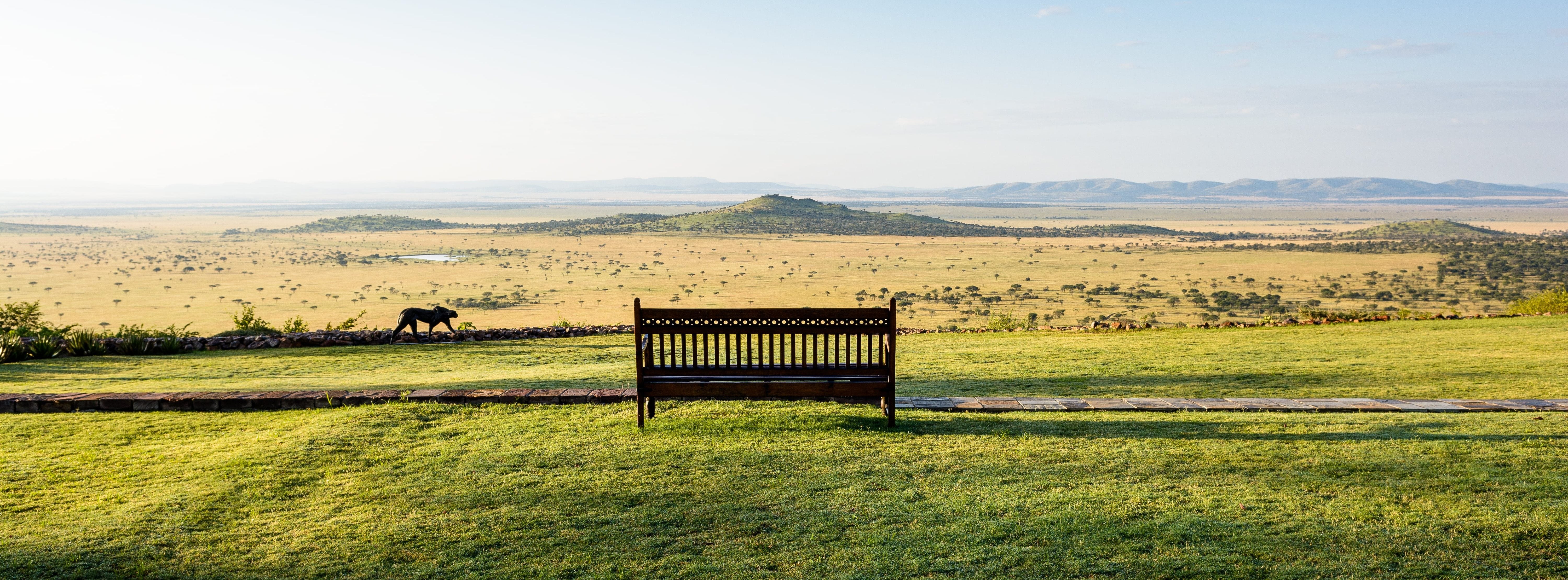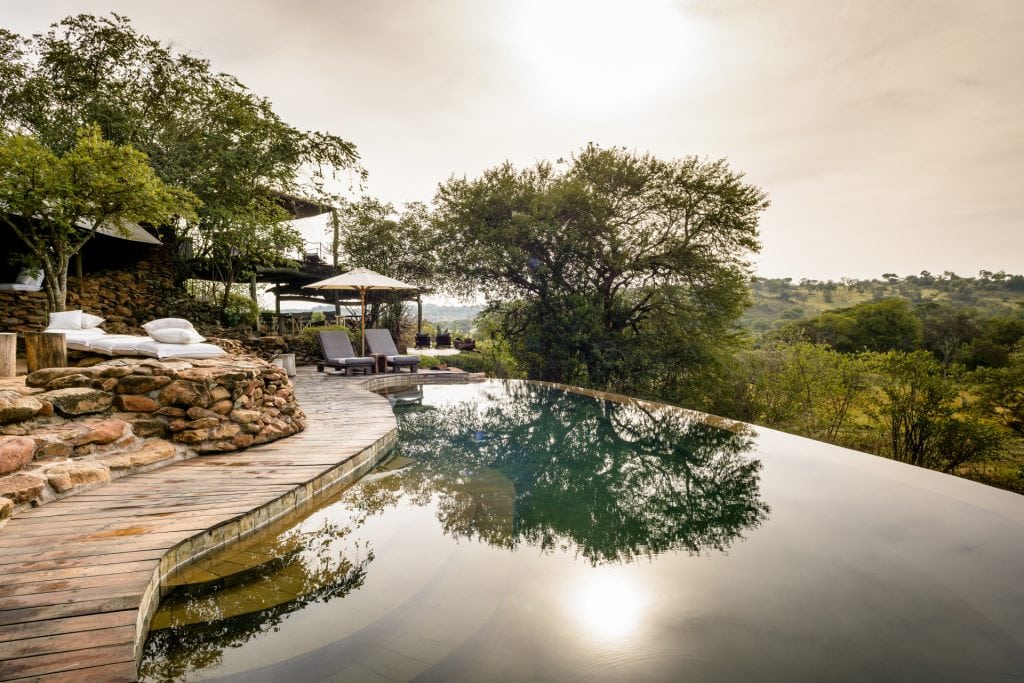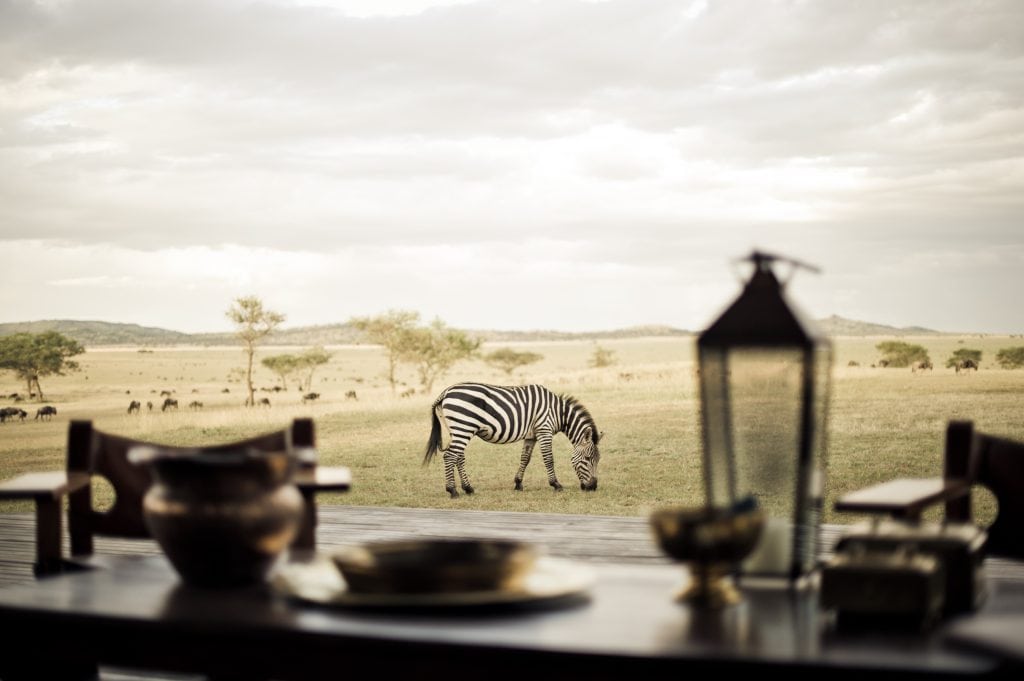
Explore Serengeti National Park on a Tanzanian Safari
Tanzania is the Africa that is imagined in your mind’s eye when you think of the wild areas of the vast continent. An astonishing thirty-one percent of Tanzania’s landmass is dedicated to wildlife areas.
This is an incredible place to immerse yourself in African culture. There are over 120 tribal groups, including the hunter-gatherer Hadzabe and the Maasai, all occurring in a relatively small area.
Tanzania borders Kenya and Rwanda, which makes combining safaris to these areas easy and worthwhile for those with the time.
Tanzania has some impressive natural wonders including Mount Kilimanjaro as well as the following highlights:
Ngorongoro Crater
A UNESCO World Heritage Site that features the world’s largest caldera. This crater formed when the enormous volcano imploded about 2 million years ago, creating a natural safari park-like environment. The abundant wildlife that occurs in the one hundred square miles of the crater floor are remarkably accustomed to vehicles, and lions will often rest in the shade provided by the safari vans. Interestingly, one of the only animals you won’t see here are giraffe, thanks to their long legs, they are unable to negotiate the steep-sided crater walls.
Olduvai Gorge
Olduvai Gorge is a 14 km long deep ravine. This area is also one of the world’s most valuable paleoanthropological sites, especially in understanding the theories behind human evolution.
Nobody ever forgets their first night in the bush. It’s among the precious, meagre handful of life firsts that remain indelible.
– AA Gill
Serengeti National Park
Serengeti National Park is another of UNESCO’s World Heritage sites and is home to what has been called the “Greatest Wildlife Show on Earth.” Close to two million ungulates partake in an annual migration across the plains in search of improved grazing conditions and water. This is, without a doubt, the best of the national parks in East Africa.
Cheetah viewing is a highlight in the south, in February, when the wildebeest cows start calving en masse. The northern portion of the Serengeti comes alive later on in the year when the wildebeest herds are forced to cross the crocodile-filled waters of the Mara River. Lion, leopard, and elephant are plentiful throughout the park year round.
Lake Manyara National Park
Lake Manyara is one of the many lakes occurring on the East African Rift. It is known for its tree-climbing lions, hippos, elephant, and in the wet season for its abundant flamingo population.
 Tarangire National Park
Tarangire National Park
Large populations of elephant, zebra, and wildebeest congregate at the Tarangire River in the dry season, so this park makes an excellent stop.
Ruaha National Park
Ruaha is Tanzania’s largest National Park that has outstanding big cat viewing in a largely under-visited area. A perfect location for the safari aficionado.
Selous Game Reserve
At 12.5 million acres, the Selous is one the largest protected wildlife areas on earth. There is a good selection of lodging options to be found here, some of which offer boating safaris on the Rufiji River, and phenomenal walking safari opportunities.
Mahale National Park
Placed on the shores of Lake Tanganyika, Mahale is the most remote National Park in Tanzania, but well worth the trip for its highlight, which is walking with the chimpanzees.


 Tarangire National Park
Tarangire National Park